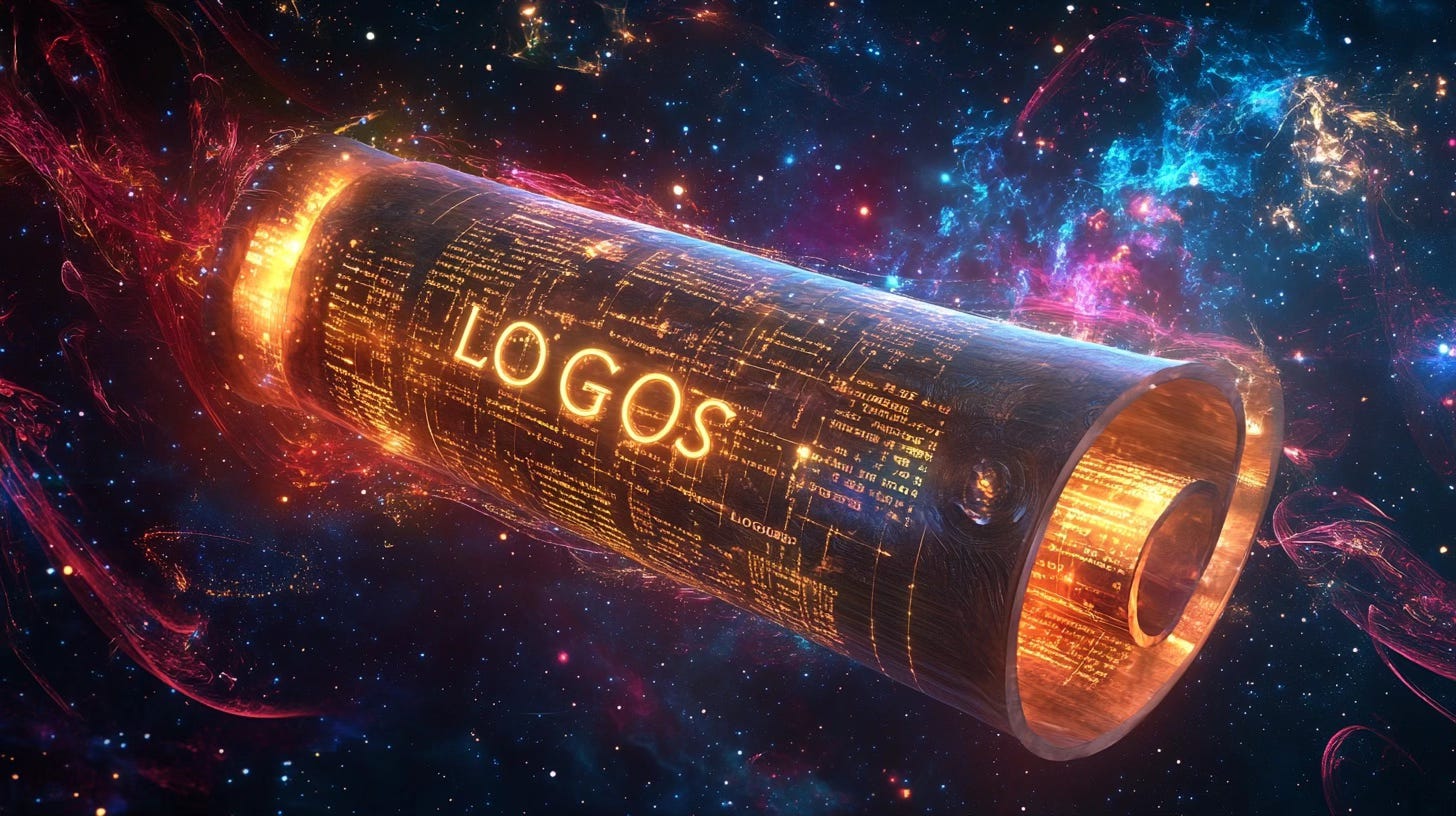From Logos to Lines of Code
How the Human Voice Became a god-like Creative Tool
I’m dictating these words into a microphone, watching them crystallize on-screen faster than the cursor can blink. A decade ago that would have felt like magic; today it’s Tuesday. Somewhere between Genesis and generative AI, speech has slipped the gravity of mere conversation and entered the realm of direct creation.
I grew up reciting the verse, “And God said, ‘Let there be light.’” Whether you treat that line as myth, metaphor, or memo, it plants an audacious idea: a voice can summon reality. For most of human history the claim stayed poetic. We built with hands, hammers, brushes, and keyboards. Words helped, but they weren’t the build-tool themselves. Now they are.
A New Age of Audible Alchemy
The shift began quietly in chat windows. I could ask an AI to draft a graceful condolence note or sketch a marketing strategy and receive ready-to-ship prose in seconds. Soon the same trick worked for images: a whispered phrase about neon koi and cyber-waves became a museum-worthy canvas. Then code followed. Tools like Cursor and Windsurf listen to natural language, generate an entire Next.js project, push it to GitHub, and deploy it on Vercel while the espresso is still steaming.
The speed is unnerving. Art in thirty seconds, production-grade code in ninety, polished correspondence in eight. Each task once demanded hours of skill or years of training; now it responds to conversational English. We’ve vaulted from typing commands to commanding reality—first in silicon and swiftly toward steel.
When Matter Starts Listening Too
Digital manifestations are just the on-ramp. The same linguistic spellcasting is seeping into factories, kitchens, and garages. Voice-to-CAD pipelines already translate spoken design briefs into printable models. Give the right instruction and a 3-D printer extrudes custom prosthetics, sneaker soles, or aerospace brackets without a mouse click.
Robotics are next. Prototype cobots sauté onions, fold laundry, or assemble circuit boards by following spoken recipes. Supply chains will compress accordingly: voice to design, design to manufacture, manufacture to doorstep—no clipboard middleman required. The pipeline from breath to object grows shorter every quarter.
Power, Stewardship, and the Tower-of-Babel Problem
Whenever humanity gains a new superpower, two questions rush in: Who controls it, and who benefits? Speech-driven creativity doesn’t make us gods; it reminds us we’re creators—and that means responsibility. A careless phrase can already spawn deepfakes, phishing scripts, or intellectual-property gray zones. Imagine the stakes when a tossed-off sentence can queue a factory run or spin up a fleet of delivery drones.
Ownership is murky, too. If I speak a sentence and an AI model shapes it into a patent-worthy design, who actually owns that artifact—speaker, model, or marketplace? We’ll be litigating that puzzle for years. Meanwhile, access is the moral frontier. If only a tiny elite can afford the best language models or voice-controlled fab labs, word-wealth will accumulate in familiar hands. The rest of us will be left talking to ourselves.
A Glimpse at the Runway Ahead
Look twelve to eighteen months out and the contours sharpen. Micro-factories will bloom inside urban warehouses, spinning up on demand when a neighborhood’s collective voice requests customized furniture or replacement parts. Household appliances will renegotiate their own supply schedules via murmured instructions from your fridge. And entrepreneurs will launch zero-friction startups by dictating a business plan one evening and waking up to a full tech stack—website, CRM, legal docs, invoicing system—assembled overnight.
If legend is right, maybe Atlantis once built temples by thought alone; we’re merely catching up.
An Invitation to Speak Something Into Being
I’d love to see what your own voice can conjure. Pick any generator—image, copy, code, or hardware—and give it a single spoken sentence. Then share the result. The most jaw-dropping creations will appear in next week’s issue.
“Death and life are in the power of the tongue,” the proverb warns. In 2025, code, companies, and perhaps entire supply chains hang there too. So choose your words wisely—and then let’s build the future one whispered prompt at a time.

